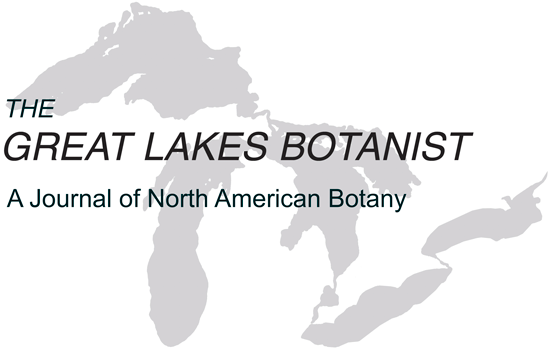ï~~16
THE MICHIGAN BOTANIST
Vol. 46
tat restoration on the west coast (Pickering et al. 2000) and pH can change following fire. The importance of pH for seed germination is generally species dependent; some species are strongly affected, while others, not at all (Perez-Fernandez et al. 2006).
MATERIALS AND METHODS
Study Species
Viola adunca (J.E. Smith) is a temperate, herbaceous, perennial plant growing to 15 cm. The
Missouri Botanical Garden lists 15 variants or subspecies; the most widespread is V adunca var.
adunca, which is found from California to New England (National Plant Data Center:
http://plants.usda.gov/cgi_bin/topics.cgi?earl=plant_profile.cgiandsymbol=VIAD).
It is known by several common names, including early-blue, dogs-tooth, hook-spur and sand violet. Viola adunca is widespread throughout North America, ranging from Greenland to Alaska, and
New York to California (Gleason and Cronquist 1991). In the upper midwest, V adunca occurs in
moist meadows, prairies, open ground, moist to dry woods, and gravely, sandy soil (Hitchcock and
Cronquist 1973; Voss 1985; UWSP Herbarium website: http://wisplants.uwsp.edu/WisPlants.html).
Experimental Methods
Some seeds were collected in the field during the growing season of 2004; other seed was obtained from the Oregon Zoo. Seeds were randomized prior to treatment. We conducted two separate
germination trials: the first set of seeds was planted on October 29th, 2004; the second set between
TABLE 1. Treatments used in the first germination trial. Four treatments were used for soil and four
treatments for light/temperature regime, giving a 4X4 factorial experiment with 16 total treatments.
"Potting soil" was the sphagnum-based Berger's BM1 brand without fertilizer; "Soil mix" consisted
of 40% Pro-Mix Potting Soil, 40% sand, and 20% Fox Farm Planting Mix. All pots were stratified
in darkness at 3.90C for two weeks. Treatments listed below follow the initial two weeks of stratification. After the treatment listed, pots were moved to the greenhouse.
TREATMENTS
Number Soil Light/Temperature
1. Control: potting soil; greenhouse light and temperature regime.
2. Potting soil; two weeks in dark at 7.20C, then greenhouse.
3. Potting soil; two weeks at 10 hours light:14 hours dark, 7.20C, then greenhouse.
4. Potting soil; two weeks at 10 hours light:14 hours dark, 7.20C; two weeks at 12 hours
light:12 hours dark, 10.60C; then greenhouse.
5. Potting soil with the pH lowered; greenhouse light and temperature regime.
6. Potting soil with the pH lowered; two weeks in dark at 7.20C, then greenhouse.
7. Potting soil with the pH lowered; two weeks at 10 hours light:14 hours dark, 7.20C, then
greenhouse.
8. Potting soil with the pH lowered; two weeks at 10 hours light: 14 hours dark, 7.20C; two
weeks at 12 hours light:12 hours dark, 10.60C; then greenhouse.
9. Soil mix; greenhouse light and temperature regime.
10. Soil mix; two weeks in dark at 7.20C, then greenhouse.
11. Soil mix; two weeks at 10 hours light:14 hours dark, 7.20C, then greenhouse.
12. Soil mix; two weeks at 10 hours light:14 hours dark, 7.20C; two weeks at 12 hours light:12
hours dark, 10.60C; then greenhouse.
13. Soil mix with the pH lowered; greenhouse light and temperature regime, then greenhouse.
14. Soil mix with the pH lowered; two weeks in dark at 7.20C, then greenhouse.
15. Soil mix with the pH lowered; two weeks at 10 hours light:14 hours dark, 7.20C, then
greenhouse.
16. Soil mix with the pH lowered; two weeks at 10 hours light:14 hours dark, 7.20C; two
weeks at 12 hours light:12 hours dark, 10.60C; then greenhouse.
0


